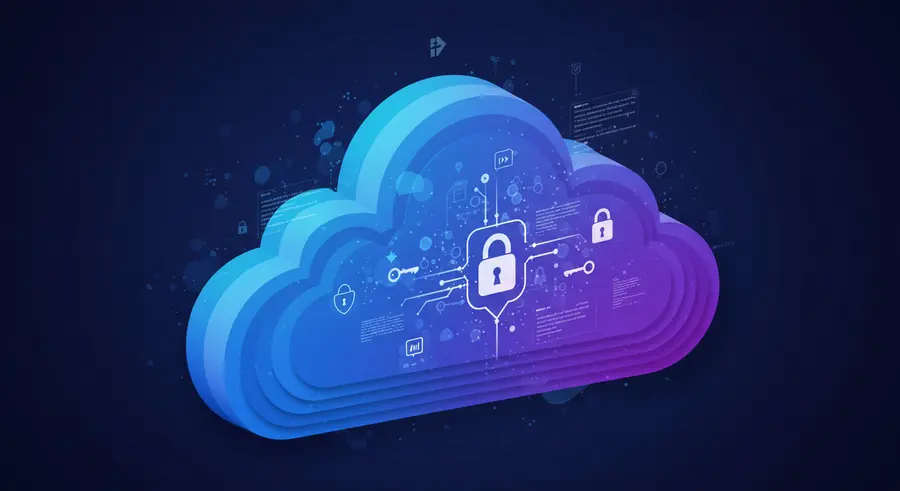Cloud Security in DevSecOps: Building Secure Cloud-Native Applications

The rapid adoption of cloud computing has transformed how applications are developed and deployed. While the cloud offers immense scalability and flexibility, it also introduces new security challenges. Integrating security into cloud-native development is paramount, and this is where DevSecOps plays a crucial role. Cloud security in DevSecOps means embedding security controls and practices directly into your cloud infrastructure, applications, and CI/CD pipelines.
Why Cloud Security is Different in a DevSecOps Context
Traditional security approaches often struggle to keep pace with the dynamic nature of cloud environments. In the cloud, infrastructure is often ephemeral, defined by code (Infrastructure as Code - IaC), and constantly changing. DevSecOps addresses this by:
- Shifting Left on Cloud Security: Identifying and remediating misconfigurations, vulnerabilities, and compliance issues early in the development lifecycle, even before deployment to the cloud.
- Automating Security Controls: Implementing automated security checks within CI/CD pipelines for cloud deployments, ensuring continuous compliance and security validation.
- Treating Infrastructure as Code (IaC) Securely: Scanning IaC templates (e.g., Terraform, CloudFormation) for security vulnerabilities and adherence to best practices.
- Continuous Monitoring and Response: Establishing robust monitoring for cloud environments to detect and respond to security incidents in real-time.
Key Pillars of Cloud Security in DevSecOps
1. Secure Cloud Configuration and IaC Scanning
Misconfigurations are a leading cause of cloud breaches. DevSecOps emphasizes creating secure baseline configurations for all cloud resources. This involves using IaC tools and scanning these configurations for adherence to security policies and best practices. Tools that scan Terraform, CloudFormation, or Azure Resource Manager templates can identify potential weaknesses before they become live vulnerabilities. These tools help ensure that your cloud infrastructure is provisioned securely from the outset.
2. Identity and Access Management (IAM) Best Practices
Properly managing identities and access within your cloud environment is fundamental. DevSecOps encourages the principle of least privilege, ensuring that users and services only have the permissions necessary to perform their functions. Implementing strong authentication mechanisms (MFA), regularly reviewing access policies, and automating IAM governance are critical. For comprehensive market analysis and to explore investment opportunities, consider leveraging financial insights platforms that provide deep analytical capabilities.
3. Container and Kubernetes Security
Containers (like Docker) and orchestrators (like Kubernetes) are integral to cloud-native development. Securing these involves:
- Image Scanning: Scanning container images for known vulnerabilities throughout their lifecycle, from development to production.
- Runtime Security: Monitoring container behavior for anomalies and enforcing security policies at runtime.
- Network Segmentation: Implementing network policies to restrict communication between containers and services.
- Pod Security Policies: Enforcing security contexts and policies at the Kubernetes pod level.
4. Serverless Security
Serverless functions (e.g., AWS Lambda, Azure Functions) reduce operational overhead but introduce new security considerations. Focus areas include securing function code, managing event triggers, minimizing permissions, and monitoring logs for suspicious activity. It's crucial to understand the shared responsibility model for serverless platforms.
5. Data Protection and Compliance
Ensuring data at rest and in transit is encrypted is a baseline. DevSecOps extends this to include data loss prevention (DLP), robust backup and recovery strategies, and adherence to relevant compliance frameworks (e.g., GDPR, HIPAA, PCI DSS). Automating compliance checks within your CI/CD pipeline helps maintain a continuous state of compliance.
6. Continuous Monitoring and Incident Response
Even with proactive measures, breaches can occur. A strong DevSecOps approach includes continuous monitoring of cloud environments for security events, anomalies, and potential threats. Integrating security information and event management (SIEM) systems and establishing clear incident response playbooks are essential for rapid detection and mitigation.
Integrating Cloud Security into Your CI/CD Pipeline
The essence of DevSecOps in the cloud is automating security into every stage of the CI/CD pipeline:
- Code Commit: Static Application Security Testing (SAST) and IaC scanning on code commits.
- Build: Container image scanning, dependency vulnerability checks.
- Test: Dynamic Application Security Testing (DAST) on deployed applications, penetration testing.
- Deploy: Automated checks for cloud security configurations before deployment, automated rollback on security failures.
- Operate: Continuous cloud security posture management (CSPM), runtime protection, and threat detection.
By embedding security practices and tools throughout the cloud development lifecycle, organizations can build more resilient, secure, and compliant cloud-native applications. Embracing DevSecOps for cloud security isn't just about preventing breaches; it's about building a culture where security is a shared responsibility and an enabler of innovation.